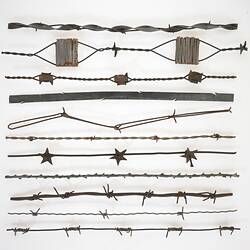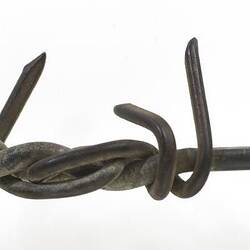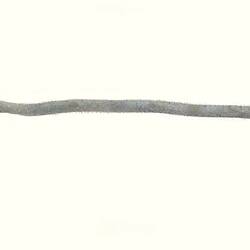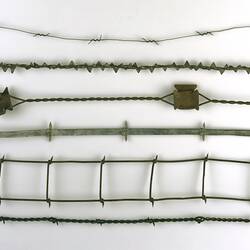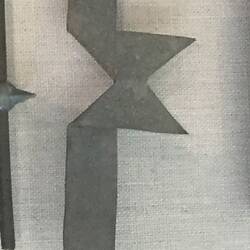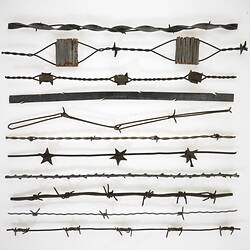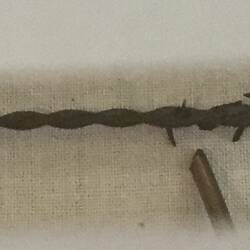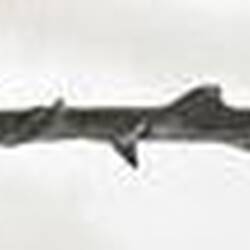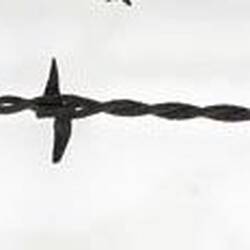In August 2001, Museum Victoria received an unusual donation of a large collection of barbed wire and fencing tools from the estate of the late Jack Chisholm, of Goschen, near Swan Hill in north-western Victoria. Jack Chisholm also bequeathed 127 miscellaneous agricultural items.
Believed to be the largest collection of its type in Australia, the Jack Chisholm Fencing Collection incorporates over 2,000 items documenting the significant role that wire fencing has played in the development of Australian agriculture over the past 150 years. This extraordinary collection was developed by Jack over a period of 21 years and consists of:
. 1,400 fencing wire samples (including almost 900 different types of barbed wire, as well as numerous samples of plain & kinked wire, ribbon wire, signal plate wire, wire joiners and splices, wire netting, ornamental wire, planter wire, razor wire & military entanglement wire) much of it mounted on 22 display boards with identification labels.
. Over 500 fencing tools (including some 400 different wire strainers, wire joiners, wire clamps fencing pliers, wire cutters, staple pullers, etc.) mounted on 20 display boards.
. Around 150 other fencing related items including rolls of wire, patent metal fence posts, droppers, post-hole diggers & post drivers, wire reels, advertising signs & wooden box ends for Aust-made nails & barbed wire and other miscellaneous items.
Jack's collection ranked with the world's best and he contributed to museum displays around Australia, including the Birdsville Museum after he became friendly with the manager when swapping a rabbit trap for hay hooks on a trip through Queensland. He also gave a selection of wires to The Devil's Rope Museum in Texas. His collection has also been sourced and used for sculpture by an artist.
The collection was originally stored in portable display units designed by Jack. He displayed a selection of his collection over 100 times to 33 venues around Victoria and NSW at museums, special events and heritage rallies. Jack mentioned that when he first put his collection on display it always had an impact, '[people's] eyes would drop out, no one thought that there was any more than a few wires'.
The most important pieces were only collected 18 months before he died, from a shop in Beechworth. Unfortunately the pieces came without provenance; not even Jack's extensive contacts with experts in America were able to assist in identifying them. One special wire has a metal tag that reads 'Made in occupied Japan' which was collected by a serviceman in Japan. To Jack's knowledge this is a very rare wire and he knows of no other example in America or Japan.
The first patent for barbed wire was listed in France in 1865, and in the United States of America in 1867. Barbed wire was introduced to Australia in the 1880s. Although there were a few significant local manufacturers, as indicated in Jack's collection, many types were imported from America. Most of Jack's pieces were found in Australia, but only 8-10 examples were actually made in Australia.
While Jack's collection features mostly American made wires, it also includes examples from England, China (a piece was acquired after the 1993 floods in Euroa, when Chinese wire was imported to rebuild fences), and Austria.
Jack's collection was one of only five large private collections in Australia at the time of his death in 2001.
More Information
-
Keywords
-
Localities
-
Authors
-
Article types

